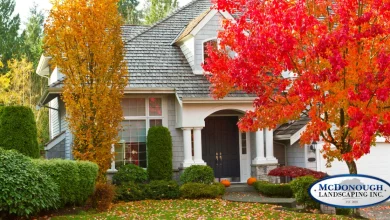Why are my vine tomatoes rotting on the bottom?

Contents
What’s happening to my tomatoes?
Home gardeners become distressed when they notice that a dry, sunken decay has developed on the blossom end of the tomatoes in their garden. This can happen especially on the first tomatoes of the season that have been carefully nurtured or after an extremely dry period in the summer. This is a condition known as blossom end rot. That happens less commonly on peppers and eggplant.

Blossom-end rot initially shows as water-soaked areas on the tomato’s blossom end, or bottom. The afflicted tissue degrades quickly, leaving the region depressed, dark brown or black, and leathery. This may happen at any moment as the tomatoes develop, but it is most common on the season’s initial tomatoes.
Blossom-end rot is caused by a lack of calcium in tomato tissue. Calcium enters the plant via the roots, but it settles in one area of the plant. This implies that the rot may develop even when the soil, stems, or leaves are rich in calcium. Actively growing parts of the plant such as developing tomatoes must have a continuous supply of calcium to prevent these spots from developing.
Blossom-end rot is caused by inconsistencies in soil moisture during the growth season. Since calcium is only moved into the plant with an ample moisture supply, when drought occurs the fruit continues to develop but will be affected by a calcium deficiency.
Fast early plant development may cause rot because tomatoes need calcium while they are actively developing and the plants may not be able to absorb enough calcium rapidly enough via the roots.
While it is tough to wait for the first ripe tomatoes from the home garden, it is essential to avoid forcing the plants to develop too rapidly.
Root damage may also cause a reduction in moisture intake. Too close cultivation or fertilizer burning might limit nutrient and water absorption via the roots. Waterlogged soils also impair the root’s capacity to absorb nutrients.
Garden soils may also have low calcium levels. This can be determined by soil testing and can be corrected by adding lime as recommended on the soil test report (order a soil test kit). Do not apply lime until your soil has been tested.
Preventing blossom-end rot
 Grow tomatoes in well-drained, organic-rich soil with a pH between 6.5 and 7.5.
Grow tomatoes in well-drained, organic-rich soil with a pH between 6.5 and 7.5.
Use fertilizer and lime as directed by a soil test. Use fertilizers low in nitrogen, but high in superphosphate, with numbers similar to 4-12-4 or 5-20-5; this will reduce the chances of blossom-end rot.
After fruit set, avoid deep cultivation as much as possible, particularly in dry weather. Scraping the soil lightly with a hoe is usually sufficient to control weeds in the home garden.
Provide a steady supply of soil moisture. Throughout the growth season, tomatoes need at least 1 inch of water each week, which may be provided by rainfall or irrigation. In the home garden, soaker hose watering is superior than overhead irrigation.
Mulching tomatoes helps to keep the soil wet. Use organic mulches such as straw free of weed seed, grass clippings, peat moss or wood chips.
When infected fruit is discovered, it should be removed. Since this rot does not move from plant to plant or from fruit to fruit, it may not impact subsequent tomatoes on the same plant if it appears on your early tomatoes. Fungicides and insecticides are ineffective against this condition.
Related Questions
-
How can I stop the bottom of my tomatoes from rotting?
How to Prevent Blossom End Rot
- Water tomato plants often. Tomatoes grow best with about an inch of water a week from rainfall or irrigation. …
- Mulch the area surrounding tomato plants. Spread a 2-inch-thick layer of organic mulch around the base of your plants. …
- Don’t over fertilize. …
- Care for the roots.
-
Can overwatering cause blossom end rot?
A calcium deficit in growing fruit causes blossom end rot. Fluctuating soil moisture due to overwatering or drought, high nitrogen fertilization, and root pruning during cultivation are conducive to blossom end rot.
-
Can you stop blossom end rot once it starts?
Treatment. If you notice some of your fruits developing blossom end rot, it is unfortunately non-reversible on the affected fruit. You will have to remove the affected fruit and fix your plant’s calcium levels so the next round of fruit will grow healthy.
-
Does baking soda help with blossom end rot for tomatoes?
There is also a DIY baking soda spray that instantly kills mildew, however mildew may recur and need another spray.





